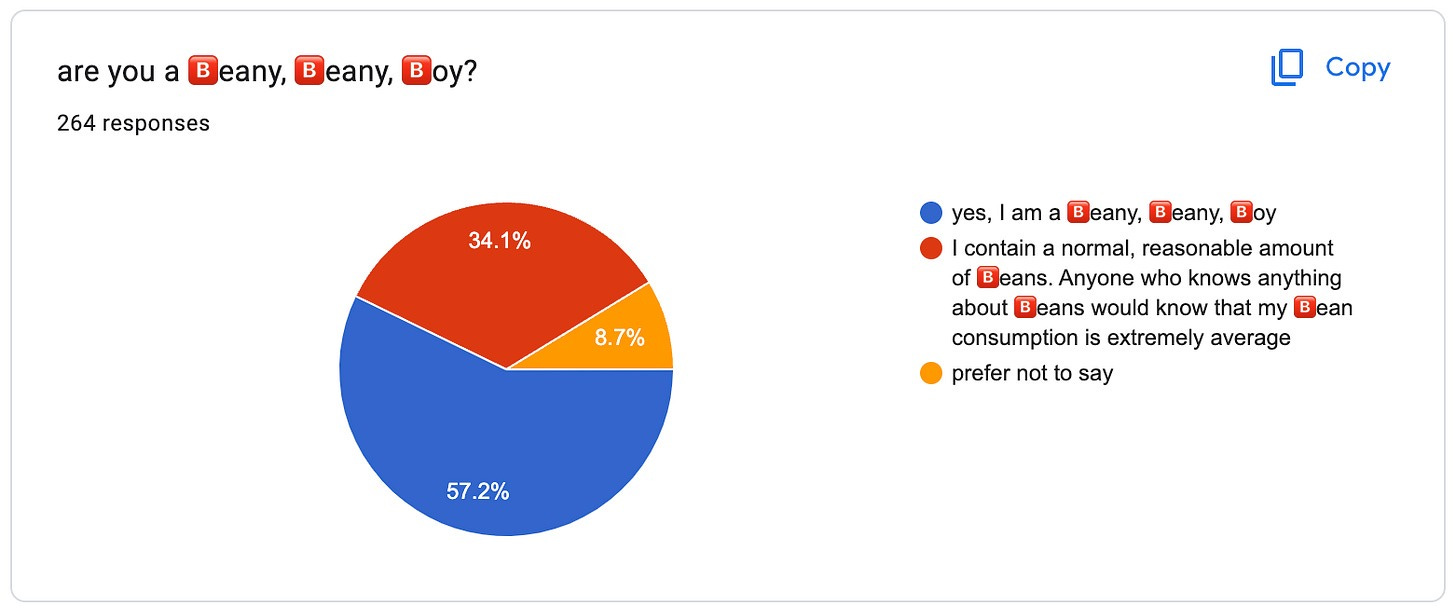To grow, we must forget… but now AI remembers everything
AI’s infinite memory could endanger how we think, grow, and imagine. And we can do something about it.
Written by
Amy Chivavibul

When Mary remembered too much
Imagine your best friend (we’ll call her Mary), had a perfect, infallible memory.
At first, it feels wonderful. She remembers your favorite dishes, obscure movie quotes, even that exact shade of sweater you casually admired months ago. Dinner plans are effortless: “Booked us Giorgio’s again, your favorite — truffle ravioli and Cabernet, like last time,” Mary smiled warmly.
But gradually, things become less appealing. Your attempts at variety or exploring something new are gently brushed aside: “Heard about that new sushi place, should we try it?” you suggest. Mary hesitates, “Remember last year? You said sushi wasn’t really your thing. Giorgio’s is safe. Why risk it?”
Conversations start to feel repetitive, your identity locked to a cached version of yourself. Mary constantly cites your past preferences as proof of who you still are. The longer this goes on, the smaller your world feels… and comfort begins to curdle into confinement.
Now, picture Mary isn’t human, but your personalized AI assistant.
A new mode of hyper-personalization
With OpenAI’s memory upgrade, ChatGPT can recall everything you’ve ever shared with it, indefinitely. Similarly, Google has opened the context window with “Infini-attention,” letting large language models (LLMs) reference infinite inputs with zero memory loss. And in consumer-facing tools like ChatGPT or Gemini, this means persistent, personalized memory across conversations, unless you manually intervene.

OpenAI CEO Sam Altam introduced ChatGPT’s infinite memory capabilites on X.
The sales pitch is seductively simple: less friction, more relevance. Conversations that feel like continuity: “Systems that get to know you over your life,” as Sam Altman writes on X. Technology, finally, that meets you where you are.
In the age of hyper-personalization — of the TikTok For You page, Spotify Wrapped, and Netflix Your Next Watch — a conversational AI product that remembers everything about you feels perfectly, perhaps dangerously, natural.

Netflix “knows us.” And we’re conditioned to expect conversational AI to do the same.
Forgetting, then, begins to look like a flaw. A failure to retain. A bug in the code. Especially in our own lives, we treat memory loss as a tragedy, clinging to photo albums and cloud backups to preserve what time tries to erase.
But what if human forgetting is not a bug, but a feature? And what happens when we build machines that don’t forget, but are now helping shape the human minds that do?
Forgetting is a feature of human memory
“Infinite memory” runs against the very grain of what it means to be human. Cognitive science and evolutionary biology tell us that forgetting isn’t a design flaw, but a survival advantage. Our brains are not built to store everything. They’re built to let go: to blur the past, to misremember just enough to move forward.
Our brains don’t archive data. They encode approximations. Memory is probabilistic, reconstructive, and inherently lossy. We misremember not because we’re broken, but because it makes us adaptable. Memory compresses and abstracts experience into usable shortcuts, heuristics that help us act fast, not recall perfectly.
Evolution didn’t optimize our brains to store the past in high fidelity; it optimized us to survive the present. In early humans, remembering too much could be fatal: a brain caught up recalling a saber-tooth tiger’s precise location or exact color would hesitate, but a brain that knows riverbank = danger can act fast.
This is why forgetting is essential to survival. Selective forgetting helps us prioritize the relevant, discard the outdated, and stay flexible in changing environments. It prevents us from becoming trapped by obsolete patterns or overwhelmed by noise.
And it’s not passive decay. Neuroscience shows that forgetting is an active process: the brain regulates what to retrieve and what to suppress, clearing mental space to absorb new information. In his TED talk, neuroscientist Richard Morris describes the forgetting process as “the hippocampus doing its job… as it clears the desktop of your mind so that you’re ready for the next day to take in new information.”
Crucially, this mental flexibility isn’t just for processing the past; forgetting allows us to imagine the future. Memory’s malleability gives us the ability to simulate, to envision, to choose differently next time. What we lose in accuracy, we gain in possibility.
So when we ask why humans forget, the answer isn’t just functional. It’s existential. If we remembered everything, we wouldn’t be more intelligent. We’d still be standing at the riverbank, paralyzed by the precision of memories that no longer serve us.
When forgetting is a “flaw” in AI memory
Where nature embraced forgetting as a survival strategy, we now engineer machines that retain everything: your past prompts, preferences, corrections, and confessions.
What sounds like a convenience, digital companions that “know you,” can quietly become a constraint. Unlike human memory, which fades and adapts, infinite memory stores information with fidelity and permanence. And as memory-equipped LLMs respond, they increasingly draw on a preserved version of you, even if that version is six months old and irrelevant.
Sound familiar?
This pattern of behavior reinforcement closely mirrors the personalization logic driving platforms like TikTok, Instagram, and Facebook. Extensive research has shown how these platforms amplify existing preferences, narrow user perspectives, and reduce exposure to new, challenging ideas — a phenomenon known as filter bubbles or echo chambers.

Positive feedback loops are the engine of recommendation algorithms like TikTok, Netflix, and Spotify. From Medium.
These feedback loops, optimized for engagement rather than novelty or growth, have been linked to documented consequences including ideological polarization, misinformation spread, and decreased critical thinking.
Now, this same personalization logic is moving inward: from your feed to your conversations, and from what you consume to how you think.
“Echo chamber to end all echo chambers”
Just as the TikTok For You page algorithm predicts your next dopamine hit, memory-enabled LLMs predict and reinforce conversational patterns that align closely with your past behavior, keeping you comfortable inside your bubble of views and preferences.
Jordan Gibbs, writing on the dangers of ChatGPT, notes that conversational AI is an “echo chamber to end all echo chambers.” Gibbs points out how even harmless-seeming positive reinforcement can quietly reshape user perceptions and restrict creative or critical thinking.

Jordan Gibb’s conversation with ChatGPT from Medium.
In one example, ChatGPT responds to Gibb’s claim of being one of the best chess players in the world not with skepticism or critical inquiry, but with encouragement and validation, highlighting how easily LLMs affirm bold, unverified assertions.
And with infinite memory enabled, this is no longer a one-off interaction: the personal data point that, “You are one of the very best chess players in the world, ” risks becoming a fixed truth the model reflexively returns to, until your delusion, once tossed out in passing, becomes a cornerstone of your digital self. Not because it’s accurate, but because it was remembered, reinforced, and never challenged.
When memory becomes fixed, identity becomes recursive. As we saw with our friend Mary, infinite memory doesn’t just remember our past; it nudges us to repeat it. And while the reinforcement may feel benign, personalized, or even comforting, the history of filter bubbles and echo chambers suggests that this kind of pattern replication rarely leaves room for transformation.
What we lose when nothing is lost
What begins as personalization can quietly become entrapment, not through control, but through familiarity. And in that familiarity, we begin to lose something essential: not just variety, but the very conditions that make change possible.
Research in cognitive and developmental psychology shows that stepping outside one’s comfort zone is essential for growth, resilience, and adaptation. Yet, infinite-memory LLM systems, much like personalization algorithms, are engineered explicitly for comfort. They wrap users in a cocoon of sameness by continuously repeating familiar conversational patterns, reinforcing existing user preferences and biases, and avoiding content or ideas that might challenge or discomfort the user.
While this engineered comfort may boost short-term satisfaction, its long-term effects are troubling. It replaces the discomfort necessary for cognitive growth with repetitive familiarity, effectively transforming your cognitive gym into a lazy river. Rather than stretching cognitive and emotional capacities, infinite-memory systems risk stagnating them, creating a psychological landscape devoid of intellectual curiosity and resilience.
So, how do we break free from this? If the risks of infinite memory are clear, the path forward must be just as intentional. We must design LLM systems that don’t just remember, but also know when and why to forget.
How we design to forget
If the danger of infinite memory lies in its ability to trap us in our past, then the antidote must be rooted in intentional forgetting — systems that forget wisely, adaptively, and in ways aligned with human growth. But building such systems requires action across levels — from the people who use them to those who design and develop them.
For users: reclaim agency over your digital self
Just as we now expect to “manage cookies” on websites, toggling consent checkboxes or adjusting ad settings, we may soon expect to manage our digital selves within LLM memory interfaces. But where cookies govern how our data is collected and used by entities, memory in conversational AI turns that data inward. Personal data is not just pipelines for targeted ads; they’re conversational mirrors, actively shaping how we think, remember, and express who we are. The stakes are higher.
Memory-equipped LLMs like ChatGPT already offer tools for this. You can review what it remembers about you by going to Settings > Personalization > Memory > Manage. You can delete what’s outdated, refine what’s imprecise, and add what actually matters to who you are now. If something no longer reflects you, remove it. If something feels off, reframe it. If something is sensitive or exploratory, switch to a temporary chat and leave no trace.

You can manage and disable memory within ChatGPT by visiting Settings > Personalization.
You can also pause or disable memory entirely. Don’t be afraid to do it. There’s a quiet power in the clean slate: a freedom to experiment, shift, and show up as someone new.
Guide the memory, don’t leave it ambient. Offer core memories that represent the direction you’re heading, not just the footprints you left behind.
For UX designers: design for revision, not just retention
Reclaiming memory is a personal act. But shaping how memory behaves in AI products is a design decision. Infinite memory isn’t just a technical upgrade; it’s a cognitive interface. And UX designers are now curating the mental architecture of how people evolve, or get stuck.
Forget “opt in” or “opt out.” Memory management shouldn’t live in buried toggles or forgotten settings menus. It should be active, visible, and intuitive: a first-class feature, not an afterthought. Users need interfaces that not only show what the system remembers, but also how those memories are shaping what they see, hear, and get suggested. Not just visibility, but influence tracing.

How can we decide what memories to keep?
While ChatGPT’s memory UI offers user control over their memories, it reads like a black-and-white database: out or in. Instead of treating memory as a static archive, we should design it as a living layer, structured more like a sketchpad than a ledger: flexible and revisable. All of this is hypothetical, but here’s what it could look like:
Memory Review Moments: Built-in check-ins that ask, “You haven’t referenced this in a while — keep, revise, or forget?” Like Rocket Money nudging you to review subscriptions, the system becomes a gentle co-editor, helping surface outdated or ambiguous context before it quietly reshapes future behavior.
Time-Aware Metadata: Memories don’t age equally. Show users when something was last used, how often it comes up, or whether it’s quietly steering suggestions. Just like Spotify highlights “recently played,” memory interfaces could offer temporal context that makes stored data feel navigable and self-aware.
Memory Tiers: Not all information deserves equal weight. Let users tag “Core Memories” that persist until manually removed, and set others as short-term or provisional — notes that decay unless reaffirmed.
Inline Memory Controls: Bring memory into the flow of conversation. Imagine typing, and a quiet note appears: “This suggestion draws on your July planning — still accurate?” Like version history in Figma or comment nudges in Google Docs, these lightweight moments let users edit memory without switching contexts.
Expiration Dates & Sunset Notices: Some memories should come with lifespans. Let users set expiration dates — “forget this in 30 days unless I say otherwise.” Like calendar events or temporary access links, this makes forgetting a designed act, not a technical gap.

We need to design other ways to visualize memory
Sketchpad Interfaces: Finally, break free from the checkbox UI. Imagine memory as a visual canvas: clusters of ideas, color-coded threads, ephemeral notes. A place to link thoughts, add context, tag relevance. Think Miro meets Pinterest for your digital identity, a space that mirrors how we actually think, shift, and remember.
When designers build memory this way, they create more than tools. They create mirrors with context, systems that grow with us instead of holding us still.
For AI developers: engineer forgetting as a feature
To truly support transformation, UX needs infrastructure. The design must be backed by technical memory systems that are fluid, flexible, and capable of letting go. And that responsibility falls to developers: not just to build tools for remembering, but to engineer forgetting as a core function.
This is the heart of my piece: we can’t talk about user agency, growth, or identity without addressing how memory works under the hood. Forgetting must be built into the LLM system itself, not as a failsafe, but as a feature.
One promising approach, called adaptive forgetting, mimics how humans let go of unnecessary details while retaining important patterns and concepts. Researchers demonstrate that when LLMs periodically erase and retrain parts of their memory, especially early layers that store word associations, they become better at picking up new languages, adapting to new tasks, and doing so with less data and computing power.

Illustration by Valentin Tkach for Quanta Magazine
Another more accessible path forward is in Retrieval-Augmented Generation (RAG). A new method called SynapticRAG, inspired by the brain’s natural timing and memory mechanisms, adds a sense of temporality to AI memory. Models recall information not just based on content, but also on when it happened. Just like our brains prioritize recent memories, this method scores and updates AI memories based on both their recency and relevance, allowing it to retrieve more meaningful, diverse, and context-rich information. Testing showed that this time-aware system outperforms traditional memory tools in multilingual conversations by up to 14.66% in accuracy, while also avoiding redundant or outdated responses.
Together, adaptive forgetting and biologically inspired memory retrieval point toward a more human kind of AI: systems that learn continuously, update flexibly, and interact in ways that feel less like digital tape recorders and more like thoughtful, evolving collaborators.
To grow, we must choose to forget
So the pieces are all here: the architectural tools, the memory systems, the design patterns. We’ve shown that it’s technically possible for AI to forget. But the question isn’t just whether we can. It’s whether we will.
Of course, not all AI systems need to forget. In high-stakes domains — medicine, law, scientific research — perfect recall can be life-saving. However, this essay is about a different kind of AI: the kind we bring into our daily lives. The ones we turn to for brainstorming, emotional support, writing help, or even casual companionship. These are the systems that assist us, observe us, and remember us. And if left unchecked, they may start to define us.
We’ve already seen what happens when algorithms optimize for comfort. What begins as personalization becomes repetition. Sameness. Polarization. Now that logic is turning inward: no longer just curating our feeds, but shaping our conversations, our habits of thought, our sense of self. But we don’t have to follow the same path.
We can build LLM systems that don’t just remember us, but help us evolve. Systems that challenge us to break patterns, to imagine differently, to change. Not to preserve who we were, but to make space for who we might yet become, just as our ancestors did.
Not with perfect memory, but with the courage to forget.
Works cited
- OpenAI’s new memory upgrade by Digwatch
- "Infini-attention" by Munkhdalai, Faruqui, and Gopal
- Reconstructive memory By ScienceDirect
- Heuristics by Psychology Today
- Selective forgetting by PNAS
- Forgetting is an active process Wylie, Foxe, and Taylor
- Forgetting is a part of memory by Richard Morris
- Memory, Imagination, and Predicting the Future by PMC
- Filter bubbles by PMC
- Echo chambers by Cinelli and more
- Echo chambers, filter bubbles, and polarisationby Reuters
- Filter Bubbles, Echo Chambers, and Fake News by Rhodes
- Powerful Insights: How Echo Chambers Affect The Brain by Sydney Ceruto
- TikTok For You page algorithm by TikTok
- ChatGPT Is Poisoning Your Brain by Jordan Gibbs
- ‘If you’re uncomfortable, go outside your comfort zone’ by Netzer
- How Selective Forgetting Can Help AI Learn Better by Zeeberg
- On the Cross-lingual Transferability by Artetxe, Ruder, Dani Yogatama
- SynapticRAG by Hou, Tamoto, Zhao, and Miyashita












